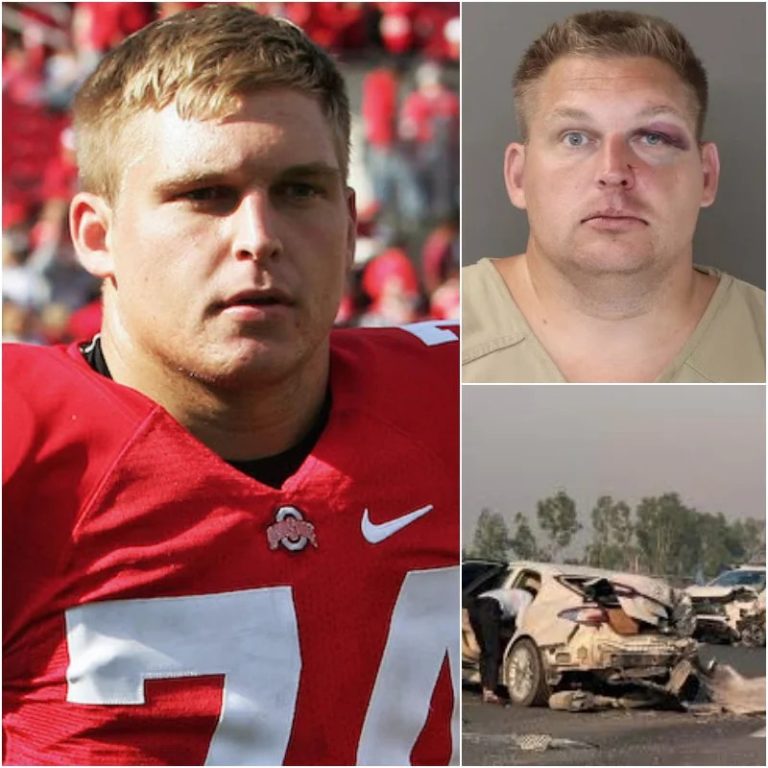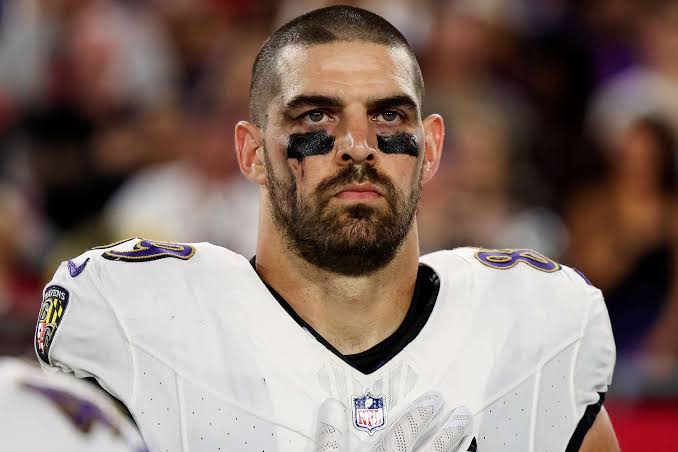The world of college football, particularly within the Ohio State community, was rocked to its core following the arrest of a former Buckeye football player for aggravated vehicular homicide after a devastating crash in Dublin, Ohio. This tragic incident has cast a shadow over a proud program and left a community grappling with grief, shock, and difficult questions. Once celebrated for his athletic prowess and connection to one of the most storied football institutions in America, the former Ohio State standout now finds himself facing the gravest of consequences—not only legally but morally, socially, and personally. His name, once chanted in packed stadiums, is now making headlines for reasons that have nothing to do with touchdowns, championships, or glory.
According to authorities, the fatal crash occurred late in the evening on a quiet suburban road in Dublin, a city known for its tranquility and community-centered atmosphere. Witnesses describe a horrific scene—an out-of-control vehicle speeding through an intersection before slamming into another car with devastating force. Emergency services responded swiftly, but tragically, one of the individuals involved in the crash succumbed to their injuries at the scene. The identity of the deceased has not been officially released pending notification of next of kin, but family members and neighbors have begun to mourn openly, lighting candles, laying flowers, and sharing stories that underline the magnitude of this loss.
Police reports indicate that the former Buckeye, whose name has now been publicly confirmed, was allegedly under the influence at the time of the crash. While the toxicology reports are still pending, preliminary evidence points to a troubling mix of speed, possible impairment, and recklessness. Charged with aggravated vehicular homicide, a felony in the state of Ohio, the former player was arrested at the scene after being treated for non-life-threatening injuries. The arresting officers noted erratic behavior and the smell of alcohol, which may serve as a critical piece of the prosecution’s case in the coming months.
The news sent shockwaves through the Ohio State football program, which has produced countless NFL stars and served as a pillar of pride for the university community. The university released a statement shortly after the news broke, expressing condolences to the victim’s family while also acknowledging the arrest of the former student-athlete. “Our thoughts are with all those affected by this tragic incident,” the statement read. “We are cooperating fully with law enforcement and extend our deepest sympathies to the victim’s loved ones.” The brevity and neutrality of the statement reflect a complicated situation in which the university must balance institutional responsibility with human empathy.
For fans and former teammates, the news was difficult to digest. Many took to social media to express their sorrow, disbelief, and confusion. Some spoke of a once-promising young man who had dazzled crowds and inspired countless young athletes with his performances on the field. Others, however, voiced frustration and anger—questioning how someone who had been given so much could act in a way that resulted in such irreversible harm. These conversations reflect a broader reckoning in sports, where fame and fortune sometimes collide tragically with personal accountability and societal expectation.
This arrest brings into sharp focus the intersection between athletics, fame, mental health, and personal responsibility. Former teammates described the player as someone who had always carried a heavy emotional burden, especially after his collegiate career came to an end without an NFL future. While he had moments of brilliance on the field, his off-field life had reportedly been marred by difficulty adjusting to life after football. Like many athletes whose identities are tied so closely to their sports, the loss of structure, adoration, and purpose may have contributed to troubling patterns of behavior, including substance abuse and isolation.
Community members in Dublin, particularly those living near the crash site, have expressed a mixture of sorrow and outrage. The quiet suburban neighborhood where the crash occurred has become a makeshift memorial, with residents placing flowers, photos, and handwritten notes. One note read, “Your life mattered. You will not be forgotten.” These tokens of remembrance are more than gestures—they represent the community’s attempt to process an unimaginable tragedy, to honor the victim, and to seek healing amidst heartbreak.
Meanwhile, legal experts predict a challenging road ahead for the accused. Aggravated vehicular homicide is a serious charge in Ohio, often carrying a prison sentence of several years—especially when intoxication is a contributing factor. Prosecutors will likely lean on dashcam footage, witness statements, and blood alcohol content results to build their case. The defense may attempt to mitigate sentencing by pointing to the former player’s mental health struggles and efforts at rehabilitation. However, the undeniable fact remains: a life was lost, and a community was wounded.
This event also brings renewed attention to the broader issue of impaired driving, especially among young adults and former athletes who may struggle with identity and coping mechanisms once their sports careers end. It raises vital questions: Are enough resources being allocated to help college athletes transition into life after sports? What more can universities, athletic departments, and communities do to support mental health and responsible decision-making? Could this tragedy have been prevented with earlier intervention?
Supporters of the victim have begun circulating petitions and statements urging lawmakers and local leaders to take stronger action on DUI prevention, including more stringent education programs and mandatory counseling for individuals with high-risk profiles. Advocacy groups against drunk driving have already begun to mobilize, seizing this moment to push for reform and remembrance. “Every tragedy is a chance to make sure it never happens again,” one activist said during a candlelight vigil. “Let this heartbreak lead to healing—and to change.”
Media coverage has intensified, with national news outlets picking up the story and examining the former player’s background. Highlights of his college football career are being re-aired, now under the cloud of his arrest. Interviews with coaches and sports analysts paint a picture of a once-promising athlete whose fall from grace was as swift as it was stunning. The stark contrast between his past glory and current legal peril serves as a sobering reminder that talent and fame do not guarantee a life free from consequence.
Family members of both the victim and the former player have largely remained silent, choosing to grieve and navigate the initial stages of the legal process privately. Sources close to the player’s family suggest that they are “devastated” and “in shock,” and are working with attorneys to determine next steps. The victim’s family, while mourning an irreplaceable loss, has reportedly requested privacy and respect from the media, emphasizing the humanity of their loved one beyond the headlines and hashtags.
In a broader societal context, this case may ultimately become part of the national dialogue about the dual-edged nature of sports celebrity. It is a story of promise turned into pain, of celebration replaced by sorrow. While football is often seen as a game of second chances and redemption arcs, some actions leave consequences so irreversible that no amount of apology or regret can undo the damage. For now, all eyes remain on the upcoming legal proceedings, as the community of Dublin—and the Ohio State fan base across the nation—continues to mourn, reflect, and reckon with what has been lost.
As the case moves forward, lawyers will prepare their arguments, judges will weigh facts, and jurors may one day be called upon to determine justice. But beyond the courtrooms and legal filings, there is an undeniable human cost that no verdict can erase. A life has been taken. A family is forever changed. A community is in mourning. And a former football hero must now face the full consequences of a night that ended in unspeakable tragedy. The echoes of this incident will ripple through time, a solemn reminder that every decision carries weight—and that behind every headline lies a human heartbroken story.



